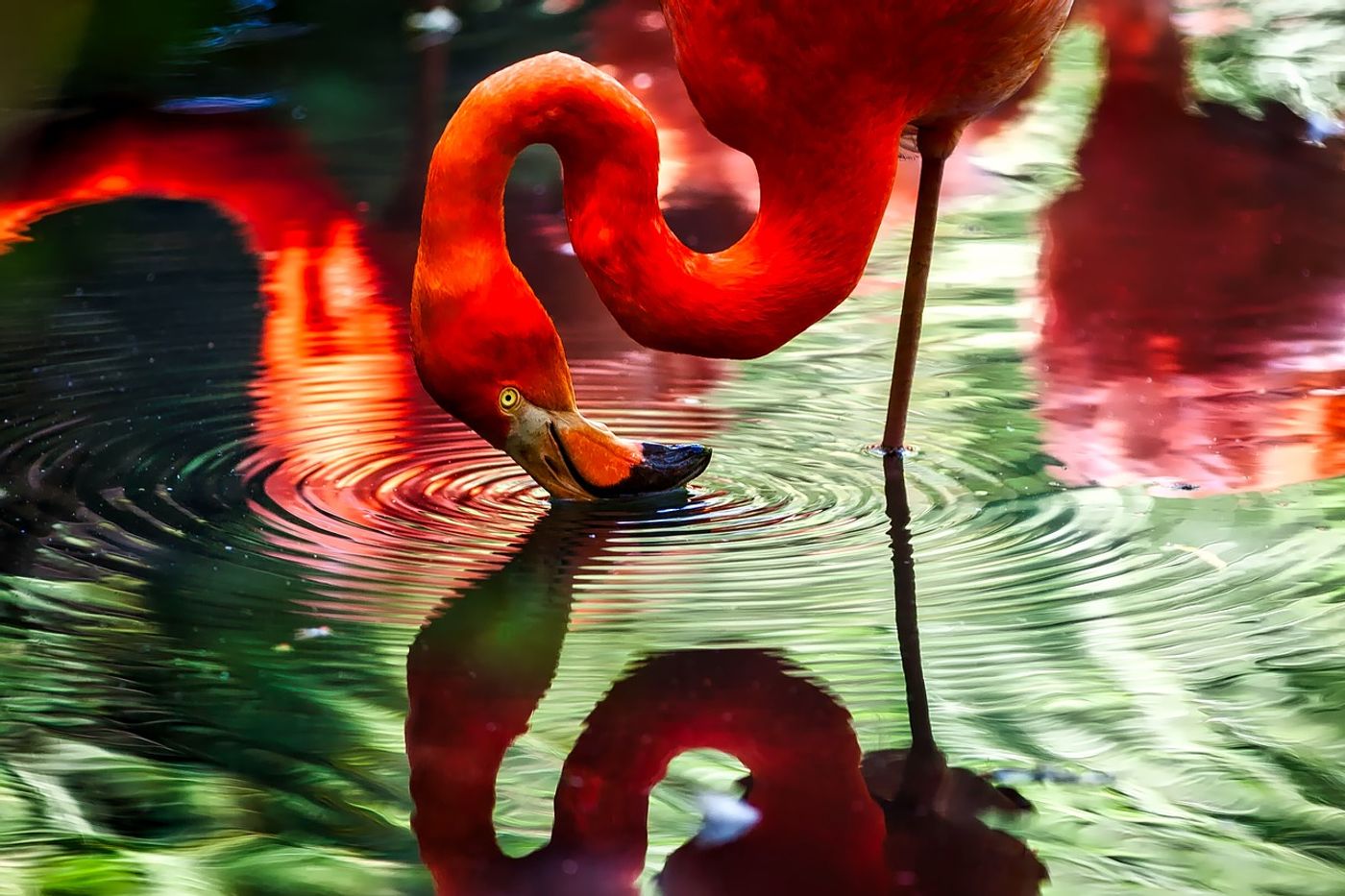Flamingos Save Energy by Balancing On One Leg
Usually when you see flamingos at rest, they’re not standing on both legs; only one. This strange behavior has stumped animal experts for years, but a new study published in the journal Biology Letters reveal what could be a viable explanation for this ‘balancing act.’
According to the researchers, which are based out of both Georgia Tech and Emory University, the use of one leg for standing can reduce the amount of energy consumed while at rest.
Image Credit: tpsdave/Pixabay
Consider this: your feet have several muscles inside of them that are constantly working to keep you standing up straight. As you begin to lean or tilt, muscles in your feet work to balance you straight. By using only one foot, you have half of the muscles working to keep you balanced, so in theory, you should be saving more energy.
Related: Flocks of birds use "beautiful physics" to save energy
Unlike humans, however, flamingos don’t eat as much. Their lower energy diet means energy conservation is more important to the species than it is for us.
Worthy of note, however, the researchers found that flamingos may not exhibit any energy at all during their one-legged stand. Instead, they could be passively using a gravitational stay mechanism, in which their muscles are dormant and their balance is achieved completely by hacking gravity to work to their advantage while their leg keeps their body into place.
Think of this like an automatic transmission in a car, where putting it in Neutral allows you to move freely and would allow the flamingo to tumble, and where Park activates a locking mechanism that prevents the car from moving. This is akin to how a flamingo’s lone leg prevents the animal from tumbling as long as the bird stays in its current position.
Also interesting, the flamingos appear to exhibit less body sway when locked into this one-legged position than they do when standing on two feet, which suggests that it’s the perfect position to take a nap or sleep in.
Related: Study confirms that some birds sleep while flying
For what it’s worth, flamingos don’t exhibit the one-legged posture all the time, which would be a pre-requisite for a bird that needed to conserve energy. Instead, they only seem to do it at certain times and it appears to align with certain temperature conditions.
Previous studies have suggested that flamingos may stand on one leg while tucking the other one away in order to conserve body heat, as flamingos are less likely to exhibit the behavior when the weather is hotter when compared to when the weather is colder.
Nevertheless, parts and pieces of each study may hold merit; we don’t really know what goes through the mind of a flamingo or why they do what they do. Future studies incorporating both ideas may lead to some insight.
Source: BBC









